
World
21:25, 18-Dec-2018
UN refugee deal vs. migration pact: what's the difference?
Updated
20:51, 21-Dec-2018
By Sim Sim Wissgott
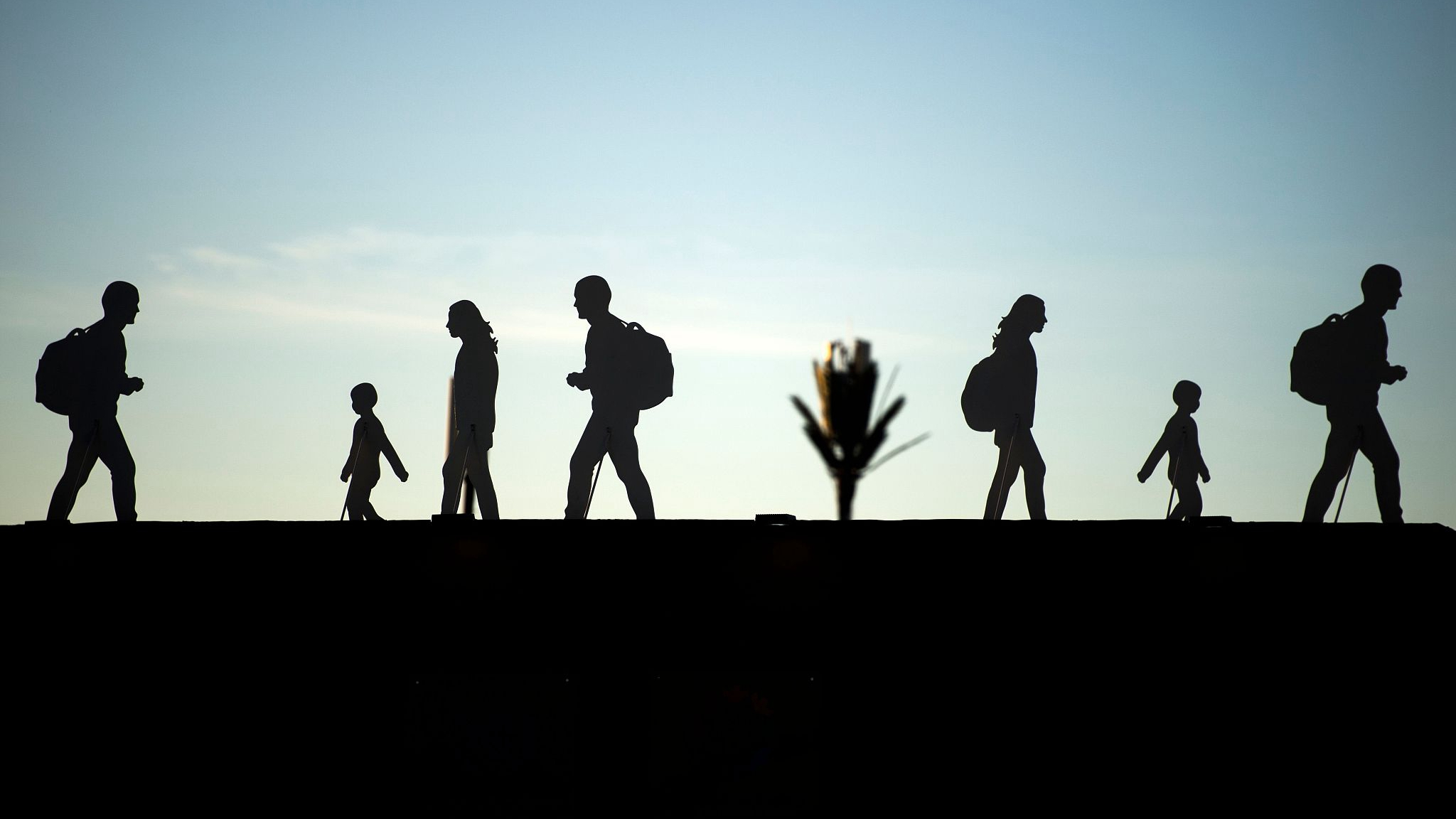
The UN General Assembly on Monday adopted a Global Compact on Refugees, a week after member states passed another key deal on migration.
Refugee deal. Migration pact. To many, these sound like the same thing. Yet support for the two initiatives varied widely and only one of them became mired in controversy.
So here's a look at the two measures, what they're about, and who voted how on what.
What's it all about?
In a nutshell, the Global Compact on Refugees aims to ease the burden on developing countries, which play host to most of the world's refugees and often struggle to do so.
The Global Compact for Migration, meanwhile, wants to ensure that migrants, who are not necessarily fleeing conflict or famine, are supported along their journey, given assistance upon arrival and eventually contribute and are integrated into their communities.
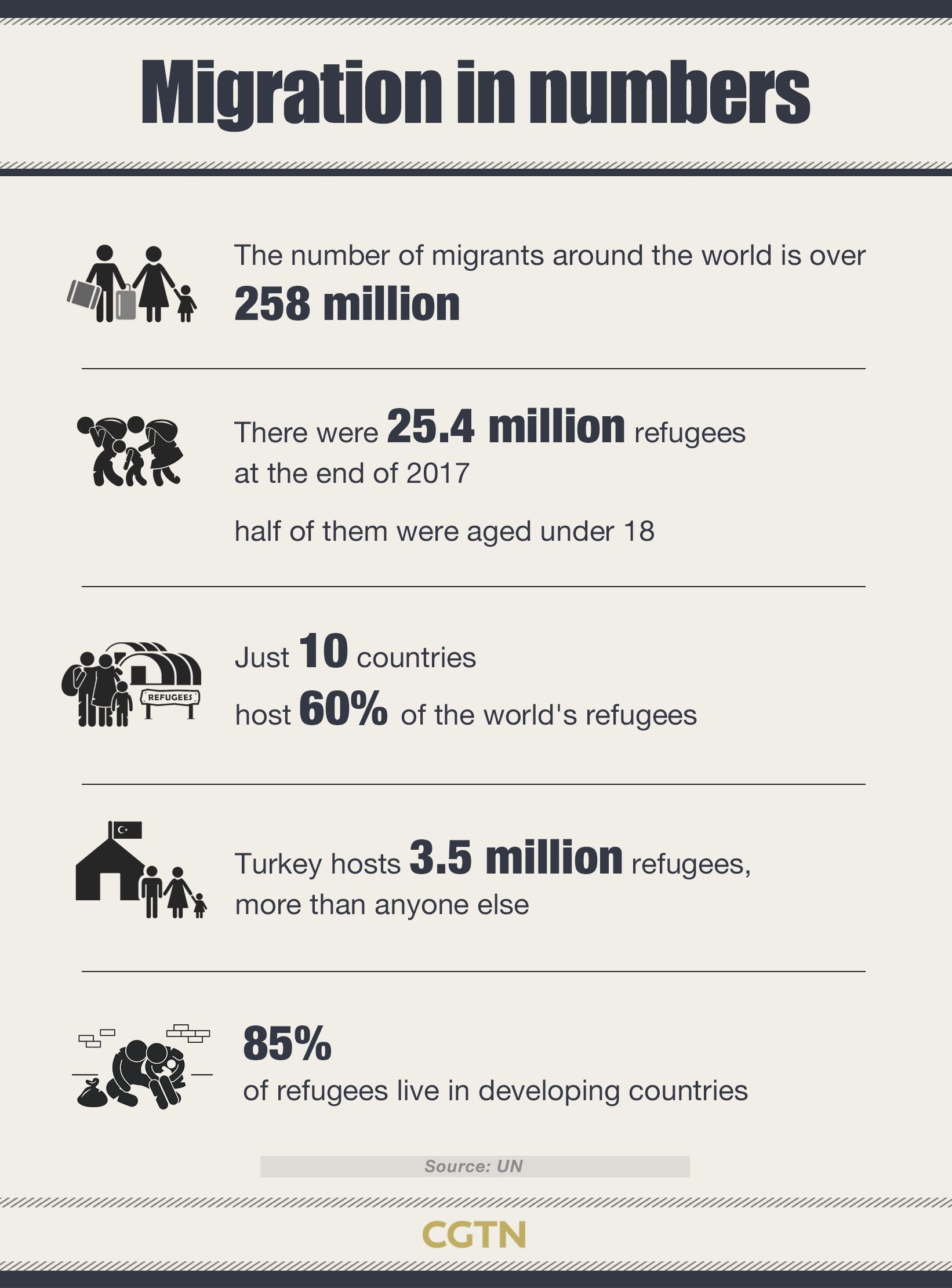
CGTN Graphic
CGTN Graphic
At the end of 2017, there were some 25.4 million registered refugees worldwide, according to the UN. The number of migrants meanwhile is about 258 million.
The UN defines a refugee as "someone who is unable or unwilling to return to their country of origin owing to a well-founded fear of being persecuted for reasons of race, religion, nationality, membership of a particular social group, or political opinion."
A migrant, on the other hand, is generally seen as anyone who has moved away from their country, regardless of the reason.
And therein lies the difference between the two deals and the controversy attached to them.
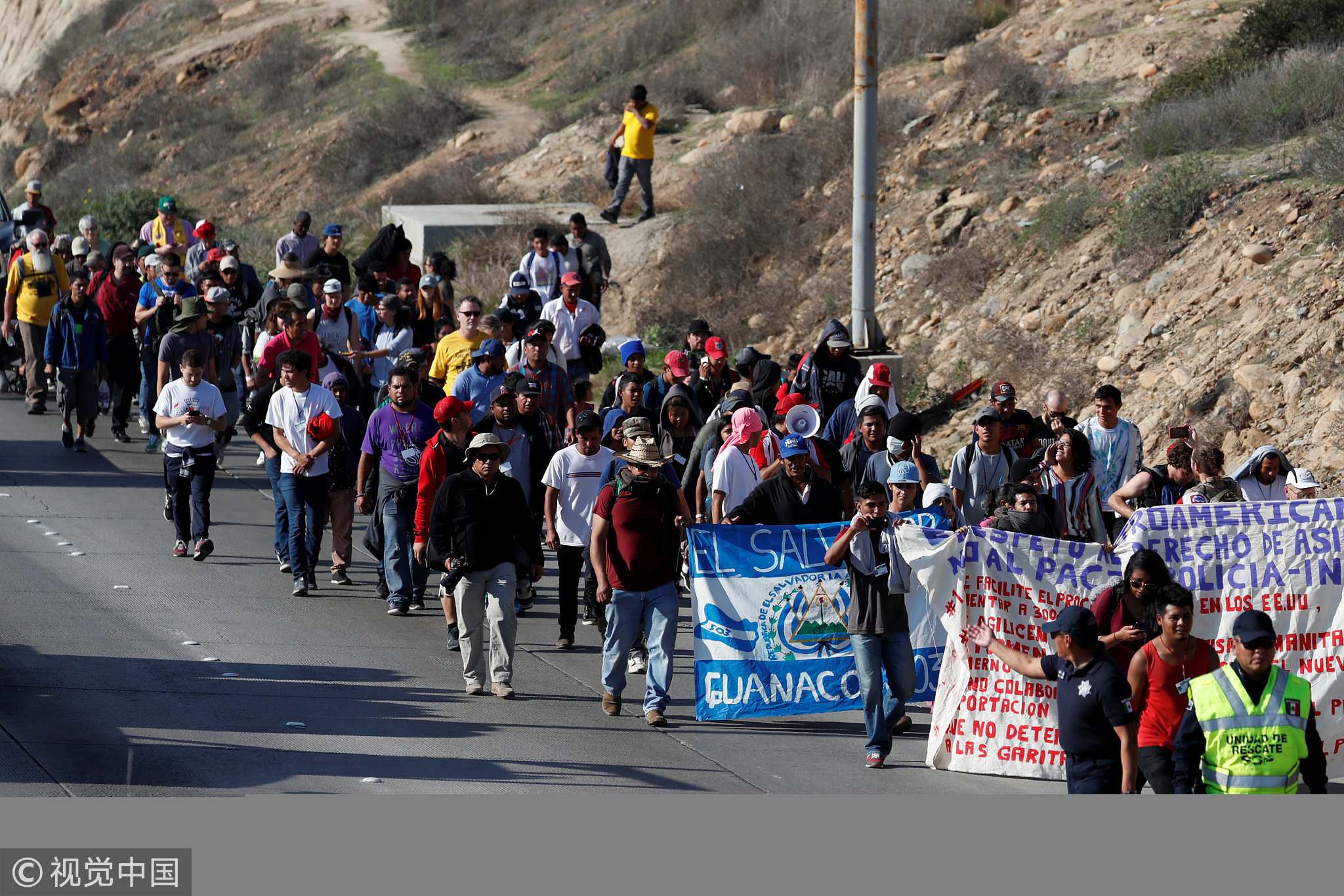
Migrants, part of a caravan of thousands from Central America trying to reach the United States, walk towards the U.S. Consulate during a demonstration in Tijuana, Mexico, December 11, 2018. /VCG Photo
Migrants, part of a caravan of thousands from Central America trying to reach the United States, walk towards the U.S. Consulate during a demonstration in Tijuana, Mexico, December 11, 2018. /VCG Photo
The Global Compact on Refugees was adopted on Monday with 181 member states voting in favor of it. Only the U.S. and Hungary voted against.
By contrast, the migration pact was the subject of months of debate, with at least 10 countries pulling out of it – including the U.S., Australia, Chile and current EU chair Austria – and several more considering a similar move.
In the end, nearly 30 UN members failed to show up to the signing ceremony in Marrakech, Morocco on December 10, and the deal – officially known as the Global Compact for Safe, Orderly and Regular Migration – was approved by 164 states.
Same or different?
On the surface, the two deals have some similarities.
Both are the result of the New York Declaration for Refugees and Migrants struck in 2016.
Crucially, neither is legally binding, meaning member states must take it upon themselves to comply or not.
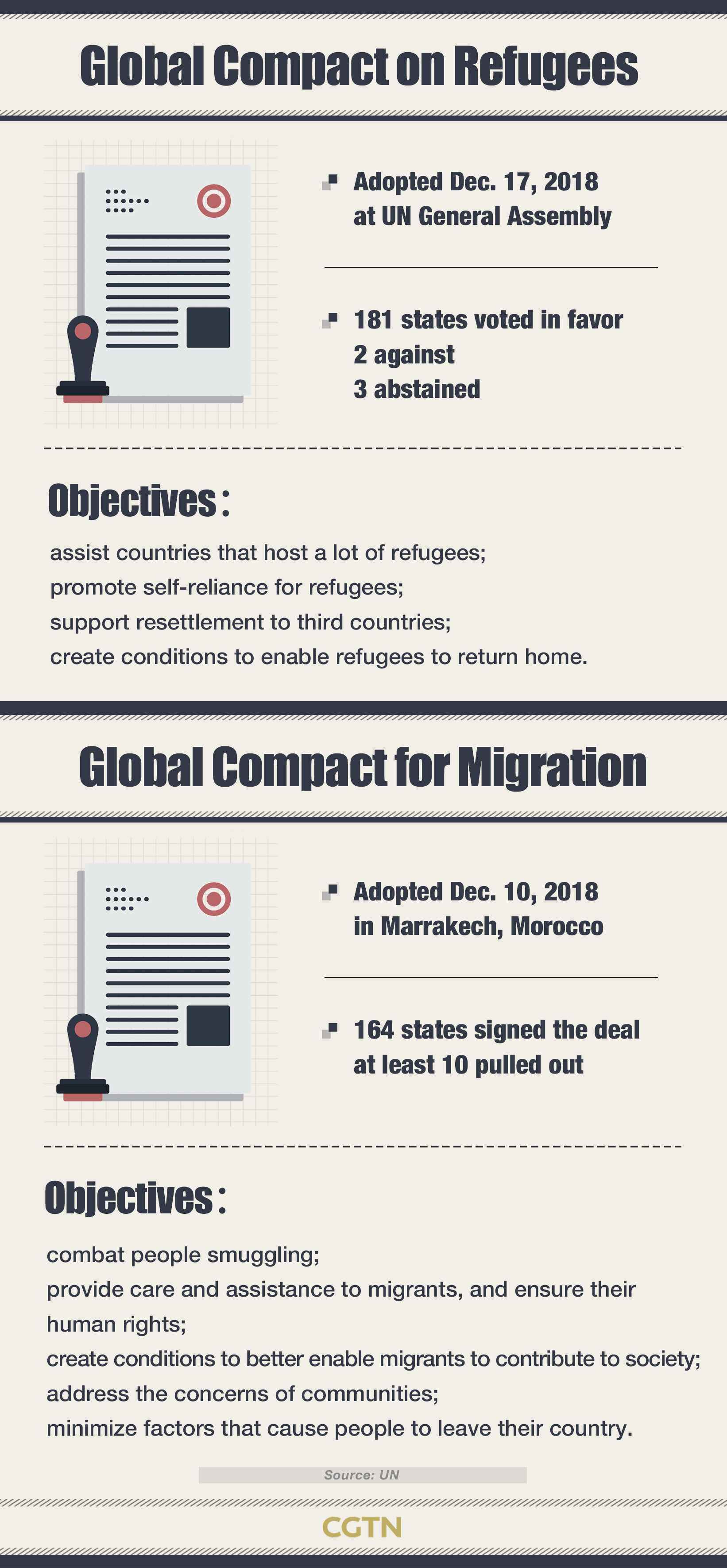
CGTN Graphic
CGTN Graphic
But whereas the deal on refugees builds on existing – and widely accepted – international frameworks, the migration pact is an entirely new creation, "the first, inter-governmentally negotiated agreement… to cover all dimensions of international migration," according to the UN.
Its aims include combating people smuggling, providing assistance and protection to migrants during their journey, and helping them find a job and become integrated into their community at the end of the line.
As a result, member states have expressed concerns the deal might infringe on their sovereignty, blur the line between legal and illegal immigration and create the impression that migration is a human right.
This comes as many countries, including the US and several EU states, have put up barriers in recent years to stem the flow of migrants arriving from Syria, Afghanistan or central America.
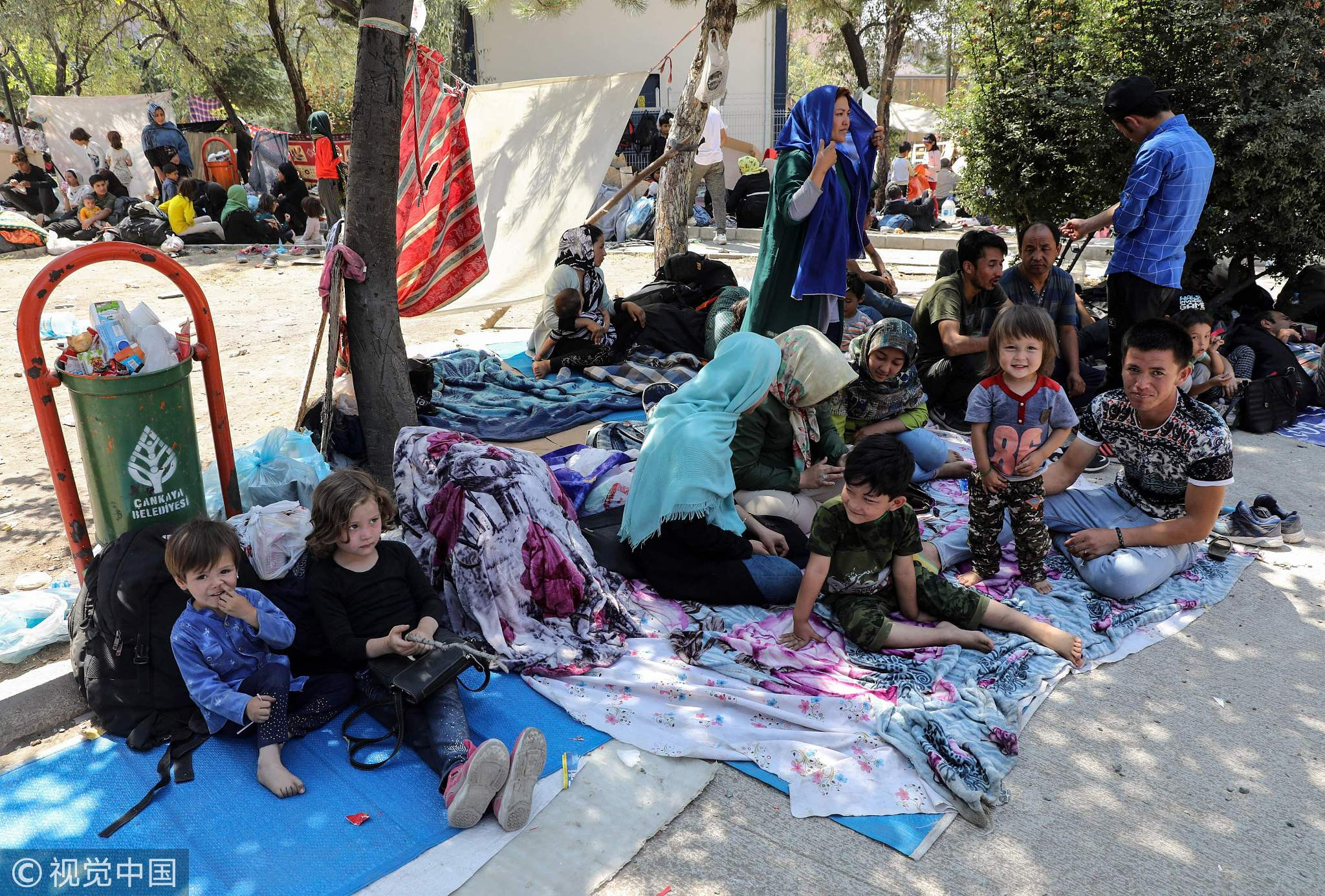
Afghan refugees rest at a makeshift camp in a park in Ankara, Turkey, August 27, 2018. /VCG Photo
Afghan refugees rest at a makeshift camp in a park in Ankara, Turkey, August 27, 2018. /VCG Photo
The new refugee deal adopted on Monday, based on the 1951 Refugee Convention and past work by the UN refugee agency UNHCR, faced far less opposition. But it still has its work cut out for it.
Just 10 countries currently host about 60 percent of the world's refugees, according to UN data. Turkey alone is home to 3.5 million refugees, more than anyone else.
A full 85 percent of refugees meanwhile live in developing countries, and places like Uganda, Rwanda, Iran and Lebanon are straining under pressure.
By helping refugees to become more self-reliant, finding ways to resettle them in third countries and supporting initiatives to allow them to return home, the new Compact "intends to provide a basis for predictable and equitable burden and responsibility-sharing" among UN member states, aid organisations, financial institutions, civil society, and local authorities, according to the document.
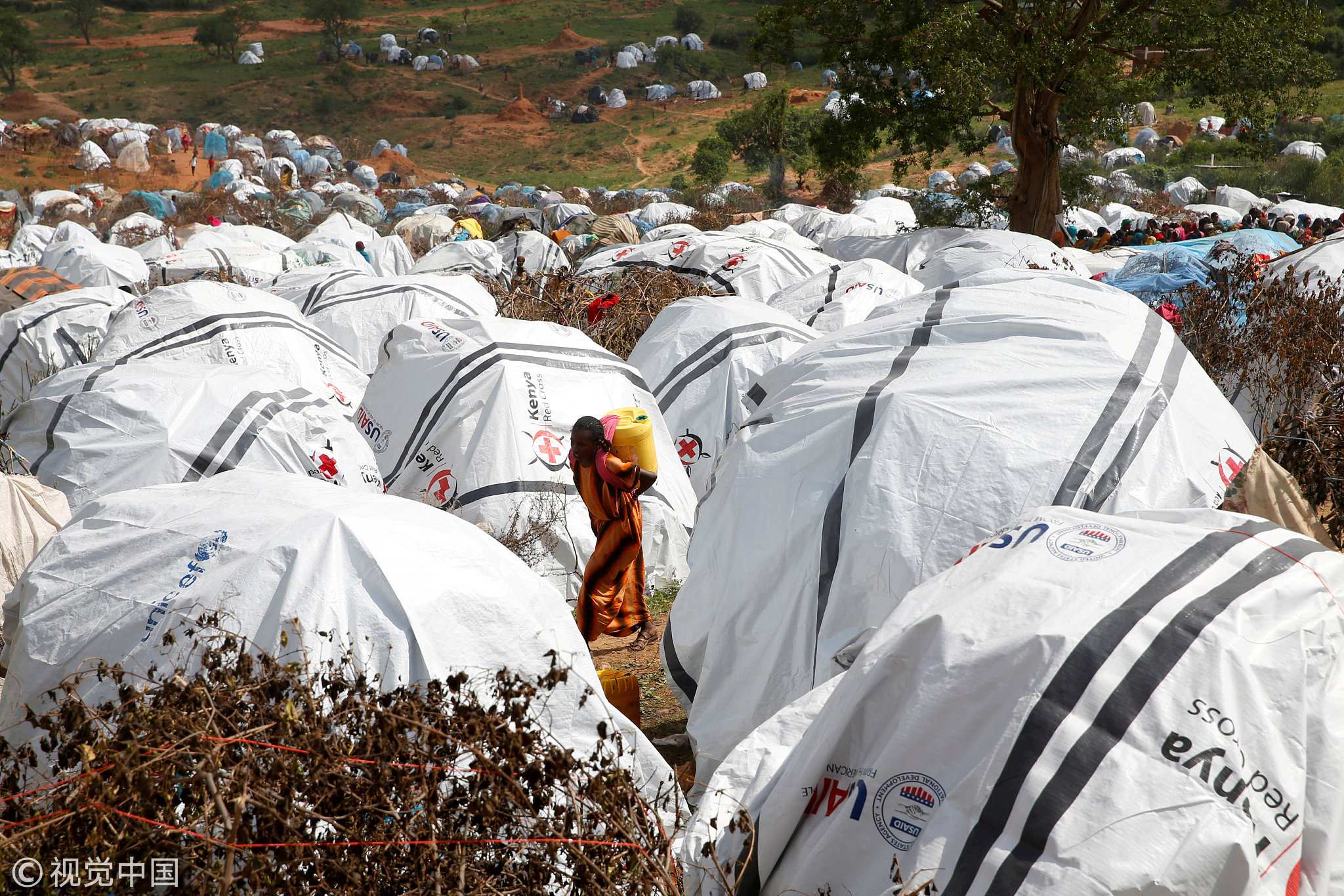
An Ethiopian girl carries water at the Somare refugee camp on the Ethiopian-Kenyan border near the town of Moyale, Kenya, March 27, 2018. /VCG Photo
An Ethiopian girl carries water at the Somare refugee camp on the Ethiopian-Kenyan border near the town of Moyale, Kenya, March 27, 2018. /VCG Photo
In other words...
Welcoming the adoption of the deal on Monday, UNHCR chief Filippo Grandi noted: "Decades of keeping refugees apart, consigned to camps or on the margins of society are giving way to a fundamentally different approach: including refugees… and enabling them to contribute to their new communities and to secure their own futures."
In a statement to mark International Migrants Day on Tuesday, UN chief Antonio Guterres meanwhile noted that human migration is “a powerful driver of economic growth, dynamism and understanding."
Last week's deal "will help us to address the real challenges of migration while reaping its many benefits".

SITEMAP
Copyright © 2018 CGTN. Beijing ICP prepared NO.16065310-3
Copyright © 2018 CGTN. Beijing ICP prepared NO.16065310-3